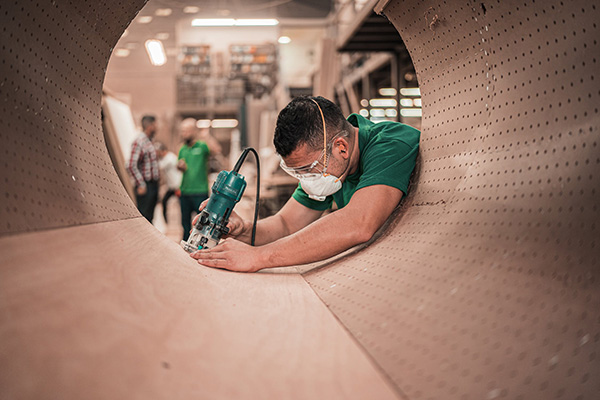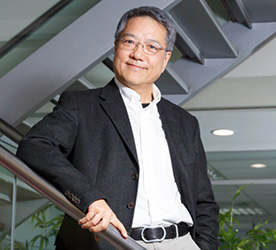Manufacturers are adopting AI to assist with operations but the technology is underutilized when it comes to keeping factory workers safe.
In manufacturing, safety has long been a top priority. More recently, modern workplace safety has undergone a tectonic shift to accommodate the exceptional challenges brought on by the COVID-19 pandemic. While many of us hoped to be out of the woods by now, the pandemic is once again surging, driven by the highly contagious Delta variant, along with others.
While all businesses are dealing with the effects of the pandemic, factories face a unique set of challenges. Oftentimes, workers must wear protective equipment that might interfere with consistent and proper mask wearing, while also having to work in close proximity or closed spaces with colleagues. In an industry where work-from-home is often not an option, employees can be reluctant to admit to feeling under the weather, choosing to push through to prove their capabilities day in and day out. Due to the nature of the business, protection against the virus requires novel and advanced solutions.
Enter artificial intelligence. Many manufacturers already leverage AI technology to anticipate and problem solve for unexpected obstacles such as machinery failure, defective product delivery, and more. According to a recent MIT survey, the top three use cases for AI in factories are improving product quality, achieving greater speed and visibility across supply chains, and optimizing inventory management. Beyond these core use cases, AI can and should be deployed to advance worker safety, especially in a pandemic. AI can help leaders improve factory security, accurate health checks, and build confidence among workers to ensure operational efficiency is never compromised.

By certifying the only people to enter a space are in fact those with approved access, factories can limit the risk of exposure to the virus while also reducing accidents and intellectual property breaches. In the past, factories have used fingerprint recognition to approve employee access to the floor. However, in today’s workplace, workers are often required to wear gloves to limit bacterial exposure. AI, combined with facial recognition technology, can be deployed as a contactless solution for identity verification during COVID-19 to control employee access while allowing workers to maintain use of personal protective equipment, including mask wearing. 3D and 2D cameras with anti-spoofing technology offer an added level of protection against potential threats. Many factories employ several thousand people, with hundreds of them working in the same facility at the same time. Facial recognition technology performs factory security checks quickly and at scale, allowing workers to get to work faster, in a certified safe environment.
Beyond guaranteeing only authorized personnel are entering the factory floor, manufacturers must be assured those employees are truly healthy. Here too, AI can support the mission through thermal cameras and accurate mask detection. The technology reads an employee’s temperature while verifying their identity to determine whether they are displaying symptoms of illness and deny access if a worker appears to be running a fever. The same technology also determines if an employee is wearing a mask and wearing it properly. In some cases, especially in manufacturing, protective gear can interfere this capability. For example, when workers are required to also wear helmets and goggles in addition to a mask. It is important manufacturers use facial recognition technology with the capability to see & recognize masks beyond other protective equipment, before allowing an employee to enter the space.
Limiting person-to-person contact during the pandemic continues to be a key practice in limiting the spread of the virus, making this contactless solution preferable to human monitors. It also limits the need to hire additional people to monitor employee health, cutting down on costs.
Enlisting technology to determine employee access and health builds confidence amongst employees and alleviates undue pressure. Many factory employees feel burdened to come to work even if they don’t feel well. In using AI to determine health status, and deny access if standards are not met, workers have no choice but to stay home when their temperature is high. In assigning the final decision to a neutral third-party, in this case technology, manufacturers remove that pressure from their employees.
Additionally, everyone working on the floor can perform their work with the confidence that all their colleagues have also passed the initial safety check. This removes doubt and lessens fears, allowing workers to focus on the job at hand.
Manufacturing safety will continue to evolve, as it has for the past 100 years or so. The introduction of new technology, such as artificial intelligence and facial recognition, opens the door for additional safety improvements while keeping costs low and ensuring workers and manufacturing leaders have the necessary tools for seamless operations.

Dr. Jau Huang founded CyberLink Corp. in 1996, with a focus on developing world-class digital video and Internet technologies. As Chairman and CEO, he leads a dynamic, award-winning team delivering some of the industry’s most innovative products. Jau earned his Ph.D. in Computer Science at UCLA and went on to become a professor in the Computer Science and Information Engineering department of National Taiwan University (NTU). During his professorship at NTU, he published numerous papers on computer network protocols and distributed multimedia systems. He is currently an adjunct Professor at NTU and frequent lecturer on digital discourse and technological innovation.
In this episode, I sat down with Beejan Giga, Director | Partner and Caleb Emerson, Senior Results Manager at Carpedia International. We discussed the insights behind their recent Industry Today article, “Thinking Three Moves Ahead” and together we explored how manufacturers can plan more strategically, align with their suppliers, and build the operational discipline needed to support intentional, sustainable growth. It was a conversation packed with practical perspectives on navigating a fast-changing industry landscape.